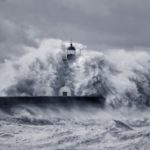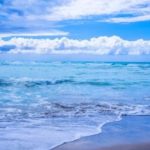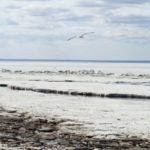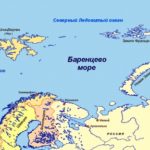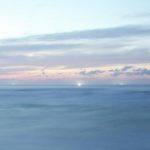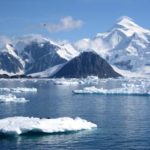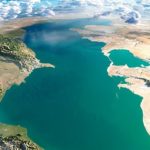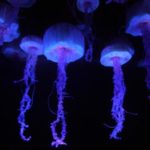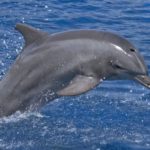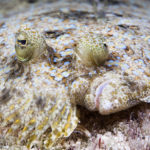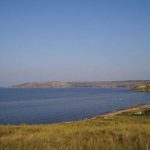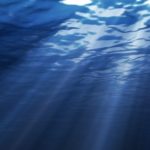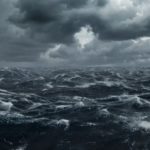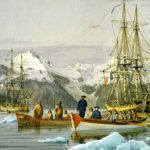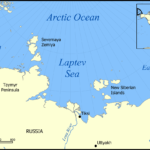White Sea
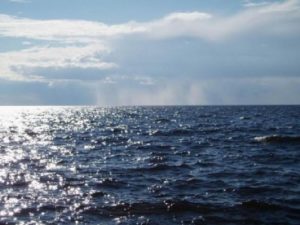 The White Sea, located on the northern outskirts of the European part of Russia, covers an area of 90 thousand km². It belongs to the seas of the Arctic Ocean, but it is the only one of the Arctic seas that is almost completely south of the Arctic Circle. Among the coast-dwellers, and then among geographers, it has long been the custom: the northern part of the White Sea is called the Funnel, and the narrow part to the south is called the Throat.
The White Sea, located on the northern outskirts of the European part of Russia, covers an area of 90 thousand km². It belongs to the seas of the Arctic Ocean, but it is the only one of the Arctic seas that is almost completely south of the Arctic Circle. Among the coast-dwellers, and then among geographers, it has long been the custom: the northern part of the White Sea is called the Funnel, and the narrow part to the south is called the Throat.
In the Throat and Funnel of the White Sea, shipping requires great skill from sailors. Here there are strong tidal fluctuations in the water level.
Especially noteworthy are the tides in the Mezen Bay, where the total swing of the level can reach 9 meters. There are no such large fluctuations in any other sea of the Arctic Ocean. Among the seas of the Russian Federation after the Sea of Okhotsk, Beloe ranks second in this respect. Such large fluctuations in the level are associated with strong currents going either to the south or to the north.
Modern ships cope with these currents, but in former times sailing ships had to be tight among fast-moving jets. Often there were cases that currents picked up the ship and threw stones on the coastal.
For a long time, the Throat of the White Sea gained fame among the navigators of the “graveyard of ships”, which has not been forgotten until now. At the entrance to the Throat there is an island of Morzhovets. Its coast is noticeably destroyed by fast currents and waves. For example, from 1833 to 1865, the coast retreated to 502 meters, and near the site from 1860 to 1881 – to 512 meters. If the destruction of the island will continue at that speed, then after a thousand years only a shallow will be in place of the island.
Of course, if the shores were rocky, they would collapse much more slowly. But the island is composed of relatively loose sandy-argillaceous sediments, possibly accumulated during the Ice Age. The same areas are on the Kaninsky shore of the White Sea. They are also destroyed.
On the southern coast of the Kola Peninsula in some places there are placers of well-rounded, washed and sorted sand. Milled bare dunes were formed from quartz and feldspar milled by winds and water. These sands are remarkable in that they, if they are disturbed by something, start to sound, make whistling sounds. Such sands, in which sound waves arise sound waves, are called “singing”. We in the Soviet Union still have them on the Riga seaside. They do not always respond so energetically to the arrival of a visitor or to a gust of wind. Usually these sands “sing” only in dry weather soon after rain. The most important and interesting feature of the waters of the White Sea is a large influx of fresh river water.
The underwater world of the White Sea is beautiful and rich. If we calculate the total amount of water that penetrates through the throat, we get a strange conclusion: from the Barents Sea there is much less water than it goes from Bely to Barentsovo. Water exchange is unequal.
This is the result of the accumulation of large amounts of river water in the White Sea. A number of major rivers flow into this area: the Northern Dvina, Mezen, Onega, Vyg, Niva and others. Meanwhile, the area of the sea is small. The layer of river water, if it could be held at sea, would be about 4 meters per year – even minus the evaporated water. There is no abundance of fresh water in any other sea. Meanwhile, the salinity of the sea water – about 30 ppm is not the smallest.
How to explain it? Obviously, the upper layer, which has a low density, does not mix well with the lower, heavier layers and, as it were, slides along them to the exit. Towards salty Barents Sea water comes, which fills the hollows. If this water did not come, the White Sea would quickly desalinate.
It was not easy to identify the mechanism of all these counter flows, to calculate the amount of river water. But Soviet researchers, who studied the sea in parallel with the study of land, rivers and climate, overcame all the difficulties. As a result, the “fresh balance” of the waters of the White Sea was calculated.
At the same time, it turned out that a huge role in the regime of the sea and life in it has a strong mixing of water in the Gorle. It is because of it that the entire deep part of the White Sea is filled with homogeneous water, which has the same negative temperature in winter and summer – 1.4 degrees. This water is formed in the throat in winter and slides along the bottom of the bottom into the basin – the central part of the sea. From the calculations of our scientists it is clear that every year almost half of the total volume of water in the sea is replaced by new water. Perhaps, only the Barents and the Chukchi Sea can compete with the White Sea in this regard.
For the winter, a large number of seals swim in the White Sea and settle on the islands, especially in Morzhovets. In the second half of winter, when the seals go out on the ice and form giant rookeries with cubs. They are usually not afraid of people and you can easily come close to them.
The White Sea is the only one of the seas of the Arctic Ocean located south of the Arctic Circle. Moreover, it is completely embedded in the land, and only in the north it connects to the Barents Sea. The coastline of the sea forms many gulfs; the largest are: Kandalaksha Bay, Onega, Dvinskaya and Mezen Bay. There are many islands on the White Sea. The most famous are the Solovetsky Islands, Oleniy Island, Velikiy Island and Morzhovets Island. The sea is shallow, the average depth of the basin is about 200 m. The Kandalaksha Bay is the deepest – 300 m. The Dvinskaya Bay is 93 km long. has a depth of 120 m. which decreases to the mouth of the Northern Dvina.
The climate is quite severe. Winter is long and cold. The winter temperature is about -15 ° C, but it can be as low as -25 ° C. Summer is just over two months old and cool enough. In summer, it often rains, the average temperature is 18 ° C, but sometimes it even keeps in July 8-10 ° C. Annual rainfall for the year is about 600 mm. Quite often fog. In summer, the water warms up to + 10 ° С, in winter – up to – 1.8 °. In winter, the sea is usually almost completely covered with ice, thickness is 35-40 cm, in cold winters coastal fast ice can be up to 150 cm. Most of the ice is drifting, constant only fast ice about 1 km wide. Fully ice melts only by the end of May.
The White Sea water resources
The White Sea is very rich in water resources, in its waters there are about 50 species of commercial fish and several hundred species of mollusks and benthic plants. Despite its relatively small size, the White Sea plays a huge role for Russia. In addition to the fishing and water transport spheres, it is the largest region of shipbuilding, including the nuclear submarine fleet.
The development of the White Sea has a long history. The White Sea region, rich in fish and fur animals, has long attracted the attention of the Russian people. At the dawn of the formation of the Russian state, these regions were settled down by immigrants from the Novgorod principality, who later became the Pomors. On the bank of the Northern Dvina in the XIV century the village Kholmogory was founded. It was from Kholmogor in 1492 that the first caravan of Russian Kochi, loaded with grain and sable, went to Europe. With this caravan, ambassadors of the Russian Tsar Ivan III went to Denmark.
In 1553, the first English ship “Eduard Bonaventura” arrived in Kholmogory. Commander of the ship, skipper Richard Chancellor, the envoy of the English king Edward VI, warmly welcomed the voivode Kholmogor Theophanes Morozov, and even arranged for him to travel to Moscow for negotiations. As a result of the negotiations, a London-Moscow company was organized, which conducted trade and opened a hemp processing and rope manufacturing workshop in Kholmogory. The company existed until 1698. After the English, the Dutch arrived at Kholmogory, having established a trading station. In the city were built shops and shops, Kholmogory turned into a large center of trade.
To protect against the raids of foreigners, a Kremlin was built in the port, which was a quadrangular fortress with five towers. The Kremlin in 1613 withstood the siege of the Polish-Lithuanian army. True, he resisted not long, after a few years he was washed away during the flood. Then, in 1621, on the other high bank, the Kholmogory camps built a new Kremlin, also of wood, but with 11 towers. Two years later, it burned down … In 1682, a diocese was established in Kholmogory, and thanks to its first chapter, Archbishop Athanasius, the city began to be built with stone houses. Trade grew, and a small port on the river was unable to receive low draft sea ships. In 1584, a new port and city, New Kholmogory, was built in the Northern Dvina delta. In the second half of the 17th century, it was renamed Archangelsk, which for many years became the only seaport of the Moscow State.
At the time of Peter I, who decided to make Russia a sea power, the first shipyards in Russia were built in Arkhangelsk, on which, using Dutch technology, they began to build large ships capable of floating not only at sea, but also in the open ocean. Arriving in Arkhangelsk in 1693, Peter first set sail to the sea on the 12-gun yacht “Saint Peter” built for his arrival.
In the same year, he founded the first state-owned shipyard – Solombalsky, which later became the Arkhangelsk Admiralty. In the second visit, on May 20, 1694, Peter personally launched the first Russian 24 gun ship “Saint Paul” from the Solombalsk shipyard. During the reign of Peter, in the shipyards of the White Sea about 150 ships were built, including 50 and 70 gun ships, whose crews were several hundred people. Thus, the first Russian flotilla appeared, and Russia took place as a sea power.
During the Soviet era, the construction of ships in the White Sea became a priority of this region. In 1936, the construction of a shipbuilding plant began near Arkhangelsk in the Nikolsky estuary of the Northern Dvina. And in 1939, the ball was laid the first warship – the battleship “Sovetskaya Belorussia”. The village Molotovsk received city status and became known as Severodvinsk.
Severodvinsk is the second largest city after Arkhangelsk, and the former Sevmash is one of the largest shipyards in the world. From 1939 to 1990, 45 warships and 163 submarines, including 128 nuclear ones, were built here. Since 1990 alone, the Northern Machine-Building Enterprise Production Association has built more than a hundred vessels of various purposes: for the Ministry of Defense, for the oil and gas complex, for the fishing industry, and for many foreign customers.
History of the White Sea
In the history of the White Sea was a black stripe. In the fifteenth century, monastic settlements appeared on the Solovki Islands, which were later transformed into a monastery. After the split of the Russian Orthodox Church, the Solovetsky Monastery became a haven for the Old Believers, who rebelled against the new foundations. They maintained the siege of the tsarist army for 7 years, but still the riot was brutally suppressed. The monastery was crushed and thousands of monks and Pomors supporting them were tortured and killed. But years later, the monastery was again restored.
After the revolution, in 1920, the Solovki monastery was closed, and the Solovki state farm and a camp for prisoners, prisoners of war of the Civil War was established in Solovki. The monks were forced to go to work in the state farm, and some left the islands. Since 1990, the Spaso-Preobrazhensky Stavropegic Monastery on the Solovetsky Islands has been reinstated and is in operation again. In addition, the Solovetsky State Historical-Architectural and Natural Museum-Reserve was created in the same place in 1967.
Despite many not always positive events, the White Sea was and remains one of the most important for Russia seas with industrial, transport and defense significance, and the peculiar, northern nature of this region is becoming more attractive for domestic and international tourism.
